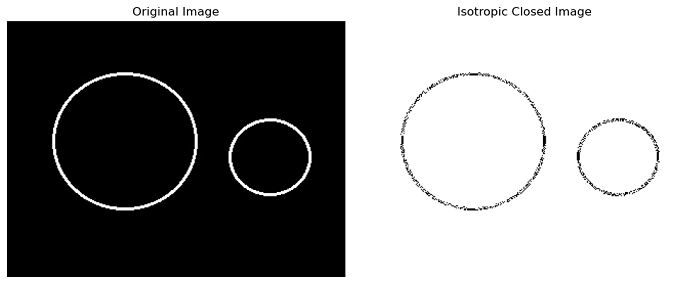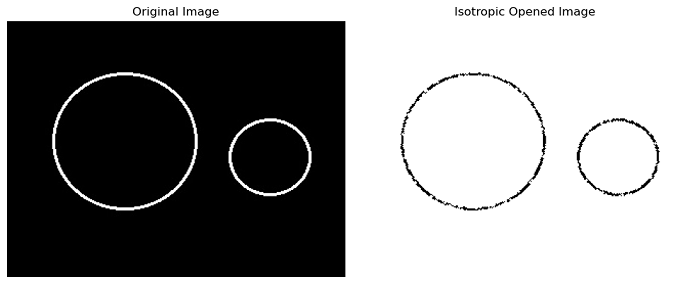
- Scikit Image – Introduction
- Scikit Image - Image Processing
- Scikit Image - Numpy Images
- Scikit Image - Image datatypes
- Scikit Image - Using Plugins
- Scikit Image - Image Handlings
- Scikit Image - Reading Images
- Scikit Image - Writing Images
- Scikit Image - Displaying Images
- Scikit Image - Image Collections
- Scikit Image - Image Stack
- Scikit Image - Multi Image
- Scikit Image - Data Visualization
- Scikit Image - Using Matplotlib
- Scikit Image - Using Ploty
- Scikit Image - Using Mayavi
- Scikit Image - Using Napari
- Scikit Image - Color Manipulation
- Scikit Image - Alpha Channel
- Scikit Image - Conversion b/w Color & Gray Values
- Scikit Image - Conversion b/w RGB & HSV
- Scikit Image - Conversion to CIE-LAB Color Space
- Scikit Image - Conversion from CIE-LAB Color Space
- Scikit Image - Conversion to luv Color Space
- Scikit Image - Conversion from luv Color Space
- Scikit Image - Image Inversion
- Scikit Image - Painting Images with Labels
- Scikit Image - Contrast & Exposure
- Scikit Image - Contrast
- Scikit Image - Contrast enhancement
- Scikit Image - Exposure
- Scikit Image - Histogram Matching
- Scikit Image - Histogram Equalization
- Scikit Image - Local Histogram Equalization
- Scikit Image - Tinting gray-scale images
- Scikit Image - Image Transformation
- Scikit Image - Scaling an image
- Scikit Image - Rotating an Image
- Scikit Image - Warping an Image
- Scikit Image - Affine Transform
- Scikit Image - Piecewise Affine Transform
- Scikit Image - ProjectiveTransform
- Scikit Image - EuclideanTransform
- Scikit Image - Radon Transform
- Scikit Image - Line Hough Transform
- Scikit Image - Probabilistic Hough Transform
- Scikit Image - Circular Hough Transforms
- Scikit Image - Elliptical Hough Transforms
- Scikit Image - Polynomial Transform
- Scikit Image - Image Pyramids
- Scikit Image - Pyramid Gaussian Transform
- Scikit Image - Pyramid Laplacian Transform
- Scikit Image - Swirl Transform
- Scikit Image - Morphological Operations
- Scikit Image - Erosion
- Scikit Image - Dilation
- Scikit Image - Black & White Tophat Morphologies
- Scikit Image - Convex Hull
- Scikit Image - Generating footprints
- Scikit Image - Isotopic Dilation & Erosion
- Scikit Image - Isotopic Closing & Opening of an Image
- Scikit Image - Skelitonizing an Image
- Scikit Image - Morphological Thinning
- Scikit Image - Masking an image
- Scikit Image - Area Closing & Opening of an Image
- Scikit Image - Diameter Closing & Opening of an Image
- Scikit Image - Morphological reconstruction of an Image
- Scikit Image - Finding local Maxima
- Scikit Image - Finding local Minima
- Scikit Image - Removing Small Holes from an Image
- Scikit Image - Removing Small Objects from an Image
- Scikit Image - Filters
- Scikit Image - Image Filters
- Scikit Image - Median Filter
- Scikit Image - Mean Filters
- Scikit Image - Morphological gray-level Filters
- Scikit Image - Gabor Filter
- Scikit Image - Gaussian Filter
- Scikit Image - Butterworth Filter
- Scikit Image - Frangi Filter
- Scikit Image - Hessian Filter
- Scikit Image - Meijering Neuriteness Filter
- Scikit Image - Sato Filter
- Scikit Image - Sobel Filter
- Scikit Image - Farid Filter
- Scikit Image - Scharr Filter
- Scikit Image - Unsharp Mask Filter
- Scikit Image - Roberts Cross Operator
- Scikit Image - Lapalace Operator
- Scikit Image - Window Functions With Images
- Scikit Image - Thresholding
- Scikit Image - Applying Threshold
- Scikit Image - Otsu Thresholding
- Scikit Image - Local thresholding
- Scikit Image - Hysteresis Thresholding
- Scikit Image - Li thresholding
- Scikit Image - Multi-Otsu Thresholding
- Scikit Image - Niblack and Sauvola Thresholding
- Scikit Image - Restoring Images
- Scikit Image - Rolling-ball Algorithm
- Scikit Image - Denoising an Image
- Scikit Image - Wavelet Denoising
- Scikit Image - Non-local means denoising for preserving textures
- Scikit Image - Calibrating Denoisers Using J-Invariance
- Scikit Image - Total Variation Denoising
- Scikit Image - Shift-invariant wavelet denoising
- Scikit Image - Image Deconvolution
- Scikit Image - Richardson-Lucy Deconvolution
- Scikit Image - Recover the original from a wrapped phase image
- Scikit Image - Image Inpainting
- Scikit Image - Registering Images
- Scikit Image - Image Registration
- Scikit Image - Masked Normalized Cross-Correlation
- Scikit Image - Registration using optical flow
- Scikit Image - Assemble images with simple image stitching
- Scikit Image - Registration using Polar and Log-Polar
- Scikit Image - Feature Detection
- Scikit Image - Dense DAISY Feature Description
- Scikit Image - Histogram of Oriented Gradients
- Scikit Image - Template Matching
- Scikit Image - CENSURE Feature Detector
- Scikit Image - BRIEF Binary Descriptor
- Scikit Image - SIFT Feature Detector and Descriptor Extractor
- Scikit Image - GLCM Texture Features
- Scikit Image - Shape Index
- Scikit Image - Sliding Window Histogram
- Scikit Image - Finding Contour
- Scikit Image - Texture Classification Using Local Binary Pattern
- Scikit Image - Texture Classification Using Multi-Block Local Binary Pattern
- Scikit Image - Active Contour Model
- Scikit Image - Canny Edge Detection
- Scikit Image - Marching Cubes
- Scikit Image - Foerstner Corner Detection
- Scikit Image - Harris Corner Detection
- Scikit Image - Extracting FAST Corners
- Scikit Image - Shi-Tomasi Corner Detection
- Scikit Image - Haar Like Feature Detection
- Scikit Image - Haar Feature detection of coordinates
- Scikit Image - Hessian matrix
- Scikit Image - ORB feature Detection
- Scikit Image - Additional Concepts
- Scikit Image - Render text onto an image
- Scikit Image - Face detection using a cascade classifier
- Scikit Image - Face classification using Haar-like feature descriptor
- Scikit Image - Visual image comparison
- Scikit Image - Exploring Region Properties With Pandas
Scikit Image - Isotopic Closing and Opening of an Image
Isotropic closing and opening are binary morphological image processing operations that utilize circular structuring elements and an optimization technique involving the Euclidean distance map to efficiently close gaps, connect regions, and remove small objects in binary images. These operations are optimized for faster execution when using large circular structuring elements.
Scikit-image provides the isotropic_closing() and isotropic_opening() functions in its morphology module to perform the binary morphological closing and opening operations using large circular structuring elements.
Using the skimage.morphology.isotropic_closing() function
The isotropic_closing() function is used to perform binary morphological closing on an input binary image.
It works the same as the skimage.morphology.binary_closing() function but it is optimized for faster closing operations with large circular structuring elements. This is achieved by applying a threshold to the inverted image's Euclidean distance map based on the implementation function scipy.ndimage.distance_transform_edt.
Syntax
Following is the syntax of this function −
skimage.morphology.isotropic_closing(image, radius, out=None, spacing=None)
Parameters
- image (ndarray): This is the binary input image on which the dilation operation is performed.
- radius (float): This parameter specifies the radius by which regions in the binary image should be dilated.
- out (ndarray of bool, optional): an optional output array where the result of the dilation operation will be stored. If you pass None, a new array will be created to store the result.
- spacing (float or sequence of float, optional): This parameter specifies the spacing of elements along each dimension of the input image. If provided as a single number, it will be used for all axes. If not specified, a grid spacing of unity is implied.
Return Value
It returns the closed image as an ndarray of boolean values (True and False).
Example
The following example demonstrates how to use the morphology.isotropic_closing() function to perform binary morphological closing on an input binary image.
import numpy as np
from skimage import morphology, io
from skimage.util import invert
import matplotlib.pyplot as plt
# Load an input image
image = io.imread('Images/Circle2.jpg', as_gray=True)
# Invert the original image to get the white object.
binary_image = invert(image)
# Perform isotropic closing with a radius of 0.5
closed_image = morphology.isotropic_closing(binary_image, 0.5)
# Display the input and closed images
fig, axes = plt.subplots(1, 2, figsize=(10, 5))
ax = axes.ravel()
# Display the input image
ax[0].imshow(image, cmap=plt.cm.gray)
ax[0].set_title('Original Image')
ax[0].set_axis_off()
# Display the closed image
ax[1].imshow(closed_image, cmap=plt.cm.gray)
ax[1].set_title('Isotropic Closed Image')
ax[1].set_axis_off()
plt.tight_layout()
plt.show()
Output
On executing the above program, you will get the following output −

Using the skimage.morphology.isotropic_opening() function
The morphology.isotropic_opening() function is used to perform binary morphological opening on an input binary image.
It works the same as the skimage.morphology.binary_opening() function but it is optimized for faster closing operations with large circular structuring elements. This is achieved by applying a threshold to the inverted image's Euclidean distance map based on the implementation function scipy.ndimage.distance_transform_edt.
Syntax
Following is the syntax of this function−
skimage.morphology.isotropic_opening(image, radius, out=None, spacing=None)
Parameters
- image (ndarray): This is the binary input image on which the dilation operation is performed.
- radius (float): This parameter specifies the radius by which regions in the binary image should be dilated.
- out (ndarray of bool, optional): an optional output array where the result of the dilation operation will be stored. If you pass None, a new array will be created to store the result.
- spacing (float or sequence of float, optional): This parameter specifies the spacing of elements along each dimension of the input image. If provided as a single number, it will be used for all axes. If not specified, a grid spacing of unity is implied.
Return Value
It returns the opened image as an ndarray of boolean values (True and False).
Example
The following example demonstrates how to use the morphology.isotropic_opening() function to perform binary morphological opening on an input binary image.
import numpy as np
from skimage import morphology, io
from skimage.util import invert
import matplotlib.pyplot as plt
# Load an input image
image = io.imread('Images/Circle2.jpg', as_gray=True)
# Invert the original image to get the white object.
binary_image = invert(image)
# Perform isotropic opening with a radius of 1
opened_image = morphology.isotropic_opening(binary_image, 1)
# Display the input and opened images
fig, axes = plt.subplots(1, 2, figsize=(10, 5))
ax = axes.ravel()
# Display the input image
ax[0].imshow(image, cmap=plt.cm.gray)
ax[0].set_title('Original Image')
ax[0].set_axis_off()
# Display the opened image
ax[1].imshow(opened_image, cmap=plt.cm.gray)
ax[1].set_title('Isotropic Opened Image')
ax[1].set_axis_off()
plt.tight_layout()
plt.show()
Output
On executing the above program, you will get the following output −
